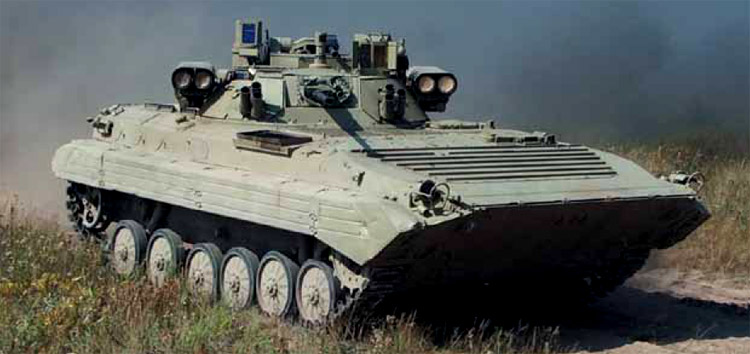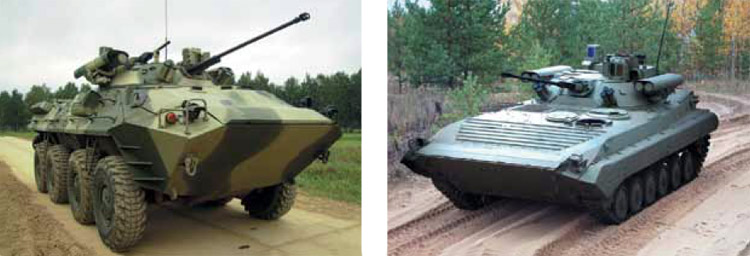INDIAN ARMED FORCES CHIEFS ON OUR RELENTLESS AND FOCUSED PUBLISHING EFFORTS

The insightful articles, inspiring narrations and analytical perspectives presented by the Editorial Team, establish an alluring connect with the reader. My compliments and best wishes to SP Guide Publications.

"Over the past 60 years, the growth of SP Guide Publications has mirrored the rising stature of Indian Navy. Its well-researched and informative magazines on Defence and Aerospace sector have served to shape an educated opinion of our military personnel, policy makers and the public alike. I wish SP's Publication team continued success, fair winds and following seas in all future endeavour!"

Since, its inception in 1964, SP Guide Publications has consistently demonstrated commitment to high-quality journalism in the aerospace and defence sectors, earning a well-deserved reputation as Asia's largest media house in this domain. I wish SP Guide Publications continued success in its pursuit of excellence.
- All about HAMMER Smart Precision Guided Weapon in India — “BEL-Safran Collaboration”
- US to sell $93 million precision artillery, Javelin and Excalibur projectiles to India
- US to sell $93 million precision artillery, Javelin and Excalibur projectiles to India
- India, Germany deepen defence ties as High Defence Committee charts ambitious plan
- True strategic autonomy will come only when our code is as indigenous as our hardware: Rajnath Singh
- India-Israel Joint Working Group Meeting on defence cooperation to boost technology sharing and co-development
- G20 Summit: A Sign of Global Fracture
B05YA01 COMBAT MODULE FOR ARMORED VEHICLES UPGRADE

The light-weight category combat vehicles (IFV, airborne assault vehicles, APC) are able to determine the combat potential of a country’s armed forces due to their application versatility. Infantry fighting vehicles (BMP-1, BMP-2, BMP-3) and airborne assault vehicles (BMD-3, BMD-4) are the most common hardware of land forces and airborne troops.
Currently a huge fleet of such combat vehicles is in service both with the Russian army, as well as abroad. These vehicles have been produced for several decades and presently their weapon systems do not meet modern requirements. However, their life cycle is quite long and reaches 30–40 years.
Many countries keep on upgrading the main fleet of their combat vehicles. In Russia, a BMP-2 mechanical module was selected as a basis for designing a uniform combat module weighing below 3 tons for upgrading Russian combat vehicles.
Russian infantry fighting vehicle BMP-2, being the main combat vehicle of many countries’ land forces, was adopted for service in 1980 and used to exceed most of its foreign counterparts in terms of combat capabilities.

Nowadays BMP-2 still basically meets the modern requirements. However BMP-2 weapon system is falling behind the modern level a number of parameters:
- guided weapon firing is possible from stationary position only due to wire command link of Konkurs anti-tank guided missile (ATGM);
- Konkurs ATGM has low penetration capability and is not effective against modern tanks;
- Konkurs ATGM has low firing rate due to manual reloading of the launcher;
- at night the system may fire only automatic cannon or PKT machine-gun at range not exceeding 800 m;
- the BMP-2 fire control system is not automated and does not allow for accurate firing, limiting the effective range of 30 mm cannon to 1100–1400 m. when firing on the move the system does not provide for required accuracy of line of sight stabilization;
- 30 mm projectiles flat trajectory firing is not efficient against prone or entrenched manpower;
- firing at aerial targets carried out using center rings of 1PZ-3 sight, actually delivers only a psychological effect, since the typical aerial target hit probability is hardly one percent.
The firepower of a combat vehicle is determined by its weapon system, thus, the increase of combat efficiency may be achieved by weapon system modernization. BMP-2 has a high weapon system upgrade potential. The challenge of increasing the firepower of existing BMPs providing their superiority over other modern vehicles has been successfully met by KBP Instrument Design Bureau.
The upgrade was implemented on a serially produced BMP-2 turret with 2A42 automatic cannon (without changing the mechanical module and turret internal layout). The design concept implies the following:
- mounting two Kornet-E ATGM launchers on the turret sides, each launcher equipped with independent electromechanical vertical drive and carrying two ready for fire missiles;
- replacement of standard BPK-2-42 sight with combined gunner’s sight equipped with independent LOS stabilization system and incorporating optical, IR and laser range-finding channels, as well as missile guidance channel;
- installation of onboard digital computer with sensors system, as well as TV-IR target auto-tracker;
- installation of 30 mm grenade launcher with independent electromechanical vertical laying drive and 300-rds feed magazine;
- installation of commander’s panoramic sight with independent LOS stabilization system and incorporating optical and laser range-finding channels;
- installation of high-precision digital weapon stabilizer.
The weight of add-on equipment installed does not exceed 500 kg, including around 260 kg of extra ammunition: 30 mm grenades and ATGM.
The specifications of BMP-2 with new B05Ya01 combat module are improved as a result of KBP-offered upgrade package.
Due to introduction of day/night FCS the system provides accurate firing with all types of weapons, including guided, at moving and stationary targets, round-the clock engagement of all types of targets from stationary position, on the move and afloat at the range up to 4000 m with automatic cannon, up to 2100 m with automatic grenade launcher, up to 5500 m with 9?133-1 ATGM. Besides, 9?133?-2 ATGM with tandem shaped-charge warhead and 9?133FM ATGM with HE warhead and 9?133FM-3 ATGM with HE warhead and proximity fuse recently designed by KBP allow firing at range up to 8 km.
Kornet-E ATGM penetration capability, increased up to 1100–1300 mm, allows reliable engagement of modern advanced tanks fitted with add-on ERA. Besides, HEF warhead of the missile is able to destroy concrete fortifications and strongpoints. Due to stand-off range targets engagement capability the upgraded BMP-2 are sure to prevail in combat with enemy tanks and IFVs.
The improvements implemented in Kornet ATGM (9?133?-2, 9?133??-3) provide for considerable enhancement of its performance without increasing weight and dimensions. These improvements ensure:
- engagement of modern and advanced tanks taking into account their armor protection growth tendency;
- engagement of armored vehicles at stand-off range;
- engagement of low-altitude assault and reconnaissance aircrafts, including drones;
- increase fire rate when firing ATGMs is provide by installation on two stabilized launchers of BMP-2 ICV of four ready-to-launch guided missiles significantly;
- implementation of TV-IR-auto target tracker enables to increase the accuracy of target tracking 3–6 fold in comparison with manual tracking. Automatic target tracker adds the FCS a qualitatively new feature, putting to life the "fire-and-forget" principle when firing a guided missile. At the same time the missile cost is significantly lower than that of a missile with a seeker which fulfills the function of the auto-tracker;
- laser guidance mode of the ATGM with orientation of the missile within the laser beam provides for high jamming-immunity against all types of active jamming;
- effective firing range of a 30-mm projectile is increased from 1100–1400 m up to 1800–2000 m;
- air defense firing effectiveness is increased significantly: kill probability by automatic gun when firing against "helicopter" and "low-flying attacking aircraft"-type target increases dramatically and its value approaches that of specialized gun and missile air defense systems of closed ranges with much lesser expenditure of ammunition. Thus, the principle of ICV versatility is fulfilled by adding air defense capacities without additional expenditures;
- ?ffective engaging of personnel is provided at ranges up to 2100, including that behind the accidents of ground and in trenches due to the implementation of low ballistics armaments (AG-30M automatic grenade launcher) with new GPD-30 rounds;
- the scope of combat tasks which can solved by the CV commander is increased due to installation of night vision panoramic sight with technical view, implemented on ICVs for the first time.
BMP-2 upgrade meets the requirements towards future infantry combat vehicle for the nfuture 20–30 years, and upgraded BMP-3 ICV can be successfully used till year 2030–2040. The carried out upgrade features a systematic approach and leads not simply to enhancement of separate technical specifications of the system, but has enabled to create a vehicle with qualitatively new features, which can successfully compete with foreign counterparts on the weapon market. KBP mastered serial production of upgraded BMP-2 combat compartments.
The advertorial is based on the article of N.I. Khokhlov, L.M. Shvets, I.A. Matveev, O.A. Borovykh.
For more information please visit www.kbptula.ru





